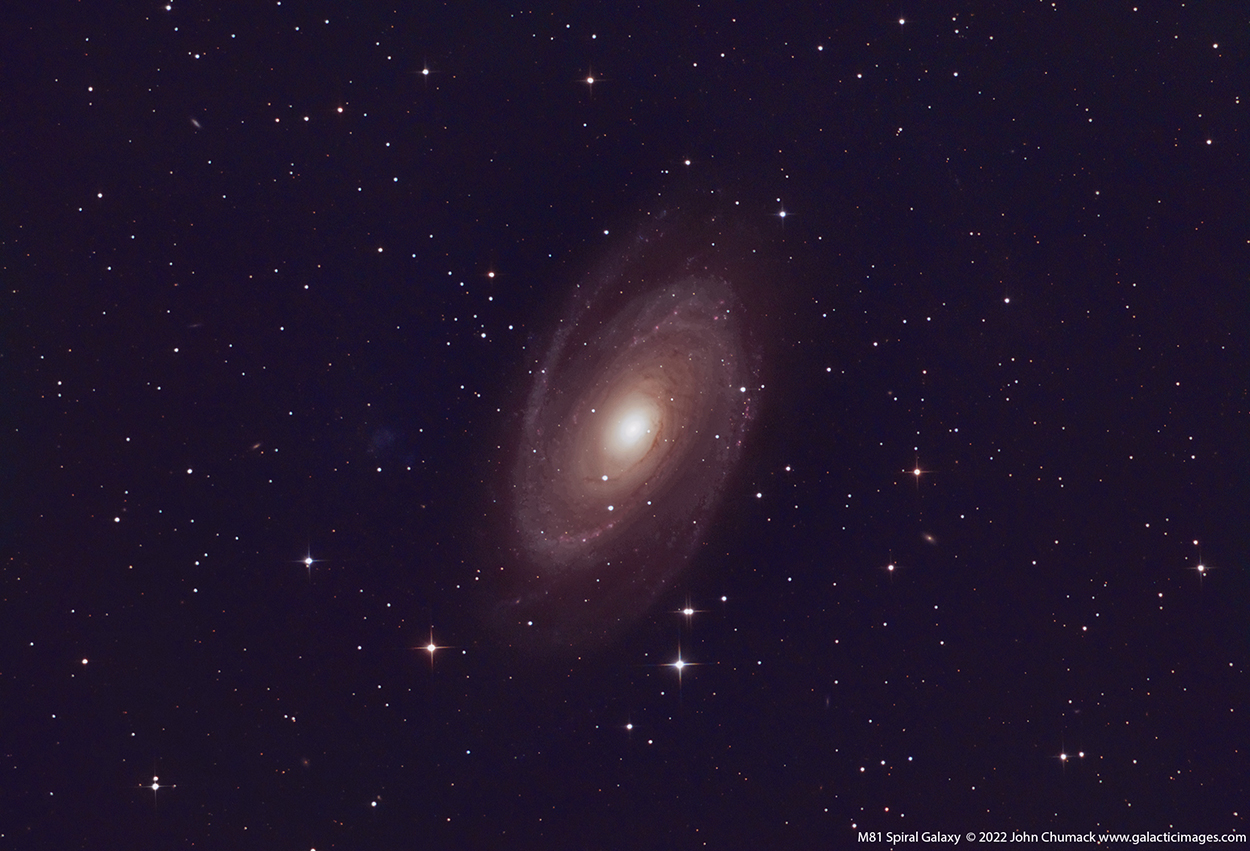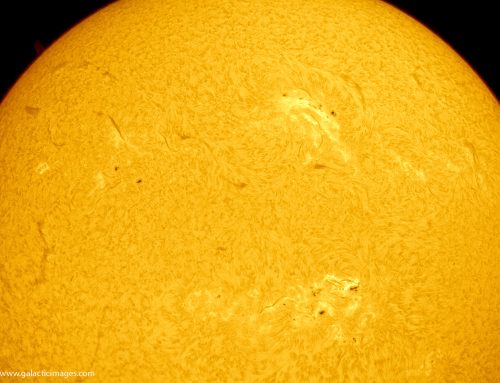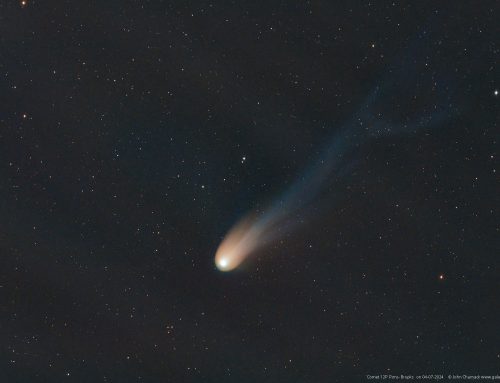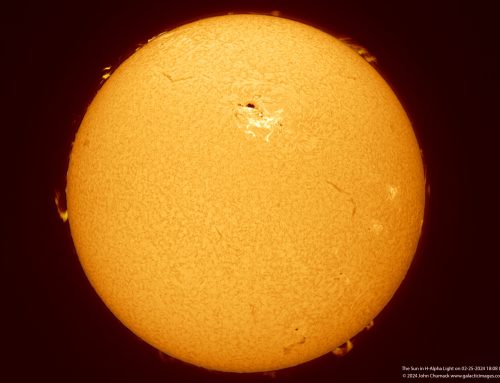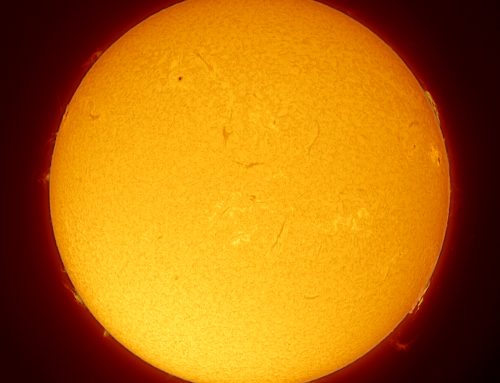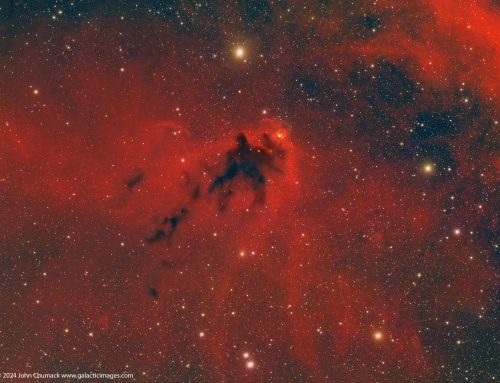M81 Bode’s Spiral Galaxy in Ursa Major
Discovered by the German astronomer Johann Elert Bode in 1774. M81 is one of the brightest galaxies in the night sky,
shining at 6.94 magnitude making it easy to see in binoculars or small telescope from a dark location.
It is located 11.74 Million light years from Earth, and spans about 90,000 light years across.
I processed it to show the dark dust lane structure around the bright core of the galaxy, which can be a challenge due to the High dynamic range of the region. The image also shows some of the faint pink nebula visible in the spiral arms of M81.
To the left of the M81 Spiral galaxy is a faint blue patch of Light..Known as Holmberg IX, or PGC 28757 a 14.4 magnitude dwarf irregular galaxy and a satellite galaxy of M81.
The galaxy is named after Erik Holmberg who first described it. Based on the observed age distribution of stars it contains it is thought to have formed within the last
200 Million years, making it the youngest nearby galaxy. It is also home to one of two yellow super-giant eclipsing binary star systems.
If you look carefully you will find at least 9 faint background galaxies in this FOV of M81 as well.
TPO 12 inch F4 Newtonian reflector telescope, Baader Coma Corrector, Bisque ME Mount, ZWO 294MC cooled Cmos Camera, L-Pro Filter,
ASI Air Plus, via Wi-Fi to my I-pad, 60 x 2 minute sub exposures, 2 hour total integration time, from my observatories at JBSPO, in Yellow Springs, Ohio. Captured on 11-26-2022.
Best Regards,
John Chumack
www.galacticimages.com


